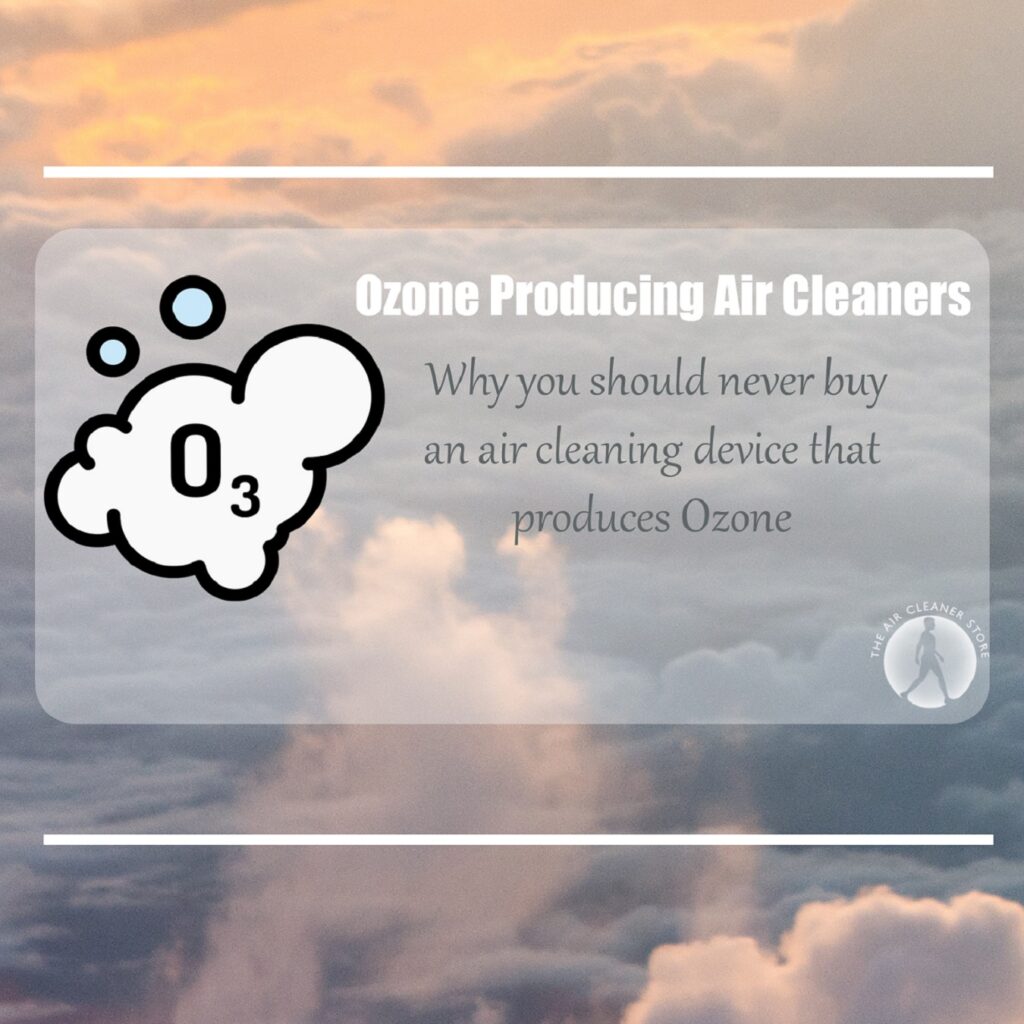The right air filtering device can help reduce allergies, prevent contagious diseases from spreading, and even improve your emotional well being. Could some air cleaning devices be harmful to your health? Yes, it turns out that some products put you at risk.
Ozone-based air purifiers pose significant health hazards, that manufacturers often attempt to conceal. Additionally, ozone-generating air purifiers are advertised as having been licensed by the US federal government, according to some marketing campaigns. This statement is not only false, it is dangerous. Units that feature UV, ionization and plasma technology also produce ozone.
What is Ozone?
Ozone is a highly reactive gas. The molecule is composed of three oxygen atoms. A simple oxygen molecule, which we use to breathe, is made up of two oxygen atoms. The third oxygen atom found in ozone detaches from the ozone and reattaches to molecules of other compounds, altering their chemical composition.
Ozone can be both natural or a man-made substance that exists in the upper (stratosphere) and lower (troposphere) of the Earth’s atmosphere. It can have both a positive or negative impact on life on Earth, depending on its location in the atmosphere.
Ozone offers valuable protection against the sun’s harmful UV radiation when it is in its proper position in the stratosphere. However, ozone on the ground can cause a variety of health problems and complications and is listed as a highly toxic pollutant according to the Environmental Protection Agency.
What does Ozone mean for your health ?
Ozone exposure directly affects the respiratory system. Depending on the duration of the exposure, ozone can cause a variety of symptoms and conditions including:
- Shortness of breath and chest pain
- Coughing, as well as a an irritated or sore throat
- Inflamed and weakened airways
- Asthma, emphysema and chronic bronchitis
- More common and severe asthma attacks
- Induces elevated levels of bacteria in the lungs
- Makes it difficult to breath deeply
These effects have been observed in healthy people, but they are more severe in people who have lung disorders like asthma. According to the EPA, ozone exposure leads to an increase in school absences, medication usage, both doctor and emergency room visits, as well as hospital admissions.
Why would any company offer ozone purifiers if it’s so dangerous?
Manufacturers may escape FDA approval by not making clear medical statements regarding their products. In reality, there isn’t much government regulation of consumer air purifiers (aside from the HEPA standard), so any time a company claims that an air cleaner or purifier is “government-approved” should be viewed as a red flag.
Ozone has been shown to be effective in certain decontamination processes.
The unstable three-oxygen-atom structure of ozone breaks down into oxygen (O2) and a free oxygen atom. The free oxygen atom breaks down cell walls and can destroy the cell’s DNA. In high concentrations, ozone has been shown to be effective in cleaning water as well as some surgical devices used by doctors during procedures. Also, ozone is often used to decontaminate unoccupied spaces from specific chemical or biological pollutants or odors. However, using ozone to “clean” the air in populated areas is much more dangerous than beneficial.
Since most people think of ozone as a good thing, it has made it easy for ozone-producing air cleaning devices to market their products as “pure air” or “healthy air” filters. The clean scent of ozone is similar to rain, which makes people feel like their air is clean and new. The take away about ozone is this: Ozone, high concentrations, sometimes can be useful but should not be used around people. Most products that claim to “clean the air” with ozone are not effective at doing so, because the concentration of ozone is too low for them to be useful. Ozone producing air cleaning devices present a significant health risk.
What to Look out for when buying an Air Cleaning Device?
According to Consumer Report, here is what you need to look out for :
Ozone can be generated if a device has an ionizer (which attracts particles through an effect similar to static electricity). Since home air purifiers that emit ozone levels above 0.05 parts per million are illegal in California, they are often mislabeled as emitting “activated oxygen,” “super oxygen,” or “energized oxygen.” If you see any of these words on labels, we advise to move on.
Below is one of the most common ways ozone features are marketed and sugar coated on labels.
So, what are your best options?
According to Consumer Report, here is what you need to look for in an air cleaner:
1.HEPA is an acronym for High Efficiency Particulate Air. A filter must be able to eliminate 99.97 percent of particles in the air that are .3 microns or larger in order to reach HEPA requirements. An Air Cleaner that is based on HEPA technology, such as Austin Air HeathMate , effectively removes pollutants, allergy triggers and viruses and bacteria.
2. Activated carbon filters are made up of molecular-sized pores that absorb and retain contaminants such as chemical emissions, gases, tobacco smoke, and odors. These devices are particularly good at absorbing formaldehyde, which can be found in carpet, wood, and upholstery.
3. Air Cleaners that combine HEPA filters and activated carbon technology can remove airborne particles while still filtering out a variety of gases and odors. Air Cleaners, such as Austin Air HeathMate Plus, provide the most advanced air purifying technology.
